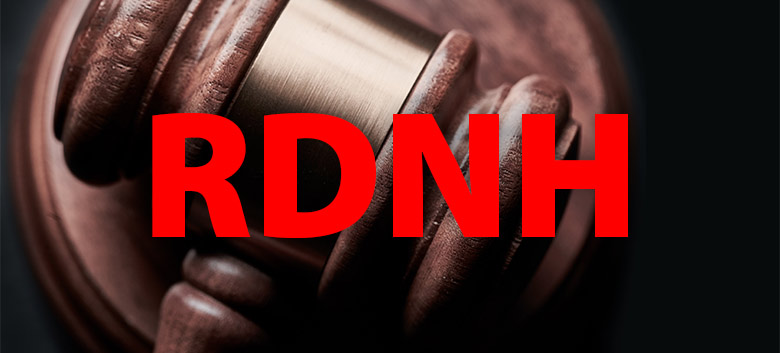A Dutch company utilizing its SKYTREE mark since 2015 filed a UDRP to usurp the matching .com domain, Skytree.com.
The Complainant operates from skytree.eu all while the disputed domain was registered in 1998. The Respondent pivoted on that fact, stating:
– the Complainant has been harassing the Respondent to seek more information about the Respondent’s intended use of the disputed domain name, and the Respondent intends to resist the Complainant’s attempt to use this forum for that purpose;
– the Respondent registered the disputed domain name well before the Complainant existed and is entitled to use the disputed domain name for any legitimate purpose, including parking it;
As part of the UDRP’s discovery, the Complainant sought to acquire skytree.ca and used a GoDaddy broker to gauge a price for the .com, placing an offer of $14,000 dollars at some point. They also noted that they were in urgency to acquire the domain and were seeking a “Plan B”, should the acquisition attempt fail.
Indeed, there was no response despite the GoDaddy broker’s efforts and the Complainant filed a UDRP instead.
The WIPO panelist lambasted the Complainant:
“[…] the Complaint itself acknowledged that the Respondent registered the disputed domain name in 1998 whereas the Complainant asserted trade mark rights that commenced only in 2014, thereby ignoring established Policy precedent that registration in bad faith could not arise in those circumstances.”
The panelist ordered the domain to remain with the Respondent and issued a finding of Reverse Domain Name Hijacking:
“Moreover, the Panel finds that the Complaint has been brought in bad faith and constitutes an attempt at Reverse Domain Name Hijacking.”

Copyright © 2025 DomainGang.com · All Rights Reserved.ARBITRATION AND MEDIATION CENTER – ADMINISTRATIVE PANEL DECISION
Skytree B.V. v. c/o skytree.com
Case No. D2025-01281. The Parties
The Complainant is Skytree B.V., Netherlands (Kingdom of the), represented by Matchmark B.V., Netherlands (Kingdom of the).
The Respondent is c/o skytree.com1, United States of America (“U.S.”), represented by Chestek Legal.
1 While the Registrar confirmed the registrant to be “c/o skytree.com”, the Panel notes that the Respondent identified itself in the Response as Whiskytree, Inc.2. The Domain Name and Registrar
The disputed domain name skytree.com is registered with GoDaddy.com, LLC (the “Registrar”).
3. Procedural History
The Complaint was filed with the WIPO Arbitration and Mediation Center (the “Center”) on January 14, 2025. On the same day, the Center transmitted by email to the Registrar a request for registrar verification in connection with the disputed domain name. Also on January 14, 2025, the Registrar transmitted by email to the Center its verification response disclosing registrant and contact information for the disputed domain name which differed from the named Respondent (Registration Private, Domains By Proxy, LLC) and contact information in the Complaint.
The Center sent an email communication to the Complainant on January 16, 2025, providing the registrant and contact information disclosed by the Registrar, and inviting the Complainant to submit an amendment to the Complaint. The Complainant filed an amendment to the Complaint, also on January 16, 2025.
The Center verified that the Complaint together with the amendment to the Complaint satisfied the formal requirements of the Uniform Domain Name Dispute Resolution Policy (the “Policy” or “UDRP”), the Rules for Uniform Domain Name Dispute Resolution Policy (the “Rules”), and the WIPO Supplemental Rules for Uniform Domain Name Dispute Resolution Policy (the “Supplemental Rules”).
In accordance with the Rules, paragraphs 2 and 4, the Center formally notified the Respondent of the Complaint, and the proceedings commenced on January 21, 2025. In accordance with the Rules, paragraph 5, the due date for Response was February 10, 2025. The Response was filed with the Center on February 10, 2025.
The Center appointed Adam Taylor as the sole panelist in this matter on February 20, 2025. The Panel finds that it was properly constituted. The Panel has submitted the Statement of Acceptance and Declaration of Impartiality and Independence, as required by the Center to ensure compliance with the Rules, paragraph 7.
The Complainant submitted an unsolicited Supplemental Filing on February 21, 2025. The Respondent replied with a Supplemental Filing of its own, on February 22, 2025.
4. Factual Background
Since 2014, the Complainant has provided direct air capture technology for carbon removal and utilisation under the mark SKYTREE.
The Complainant owns a number of registered trade marks for SKYTREE including Belelux trade mark No. 1309793, filed on May 4, 2015, registered on July 20, 2015, and International Registration No. 1280364, designating the U.S., amongst others, filed on May 4, 2015, registered on October 29, 2015, in classes 1, 7 and 11.
The Complainant operates a website at “www.skytree.eu”.
The Respondent is a visual effects and content creation company.
The Respondent registered the disputed domain name on December 31, 1998.
The Respondent has never actively used the disputed domain name; rather it has resolved over the years to a range of Registrar holding/parking pages and error notices, with a 1999 screenshot indicating use for a Registrar parking page with pay per click (“PPC”) links to e-commerce-related services.
On or about September 20, 2024, the Complainant completed a GoDaddy brokerage service form with a view to buying the domain name skytree.ca. On the same day, the Complainant also emailed the broker saying that it would like to investigate buying the disputed domain name as well. The Complainant added that it was in the process of trademarking SKYTREE in the U.S. and Canada.
On September 23, 2024, the broker emailed the Complainant indicating that the GoDaddy valuation of the disputed domain name was USD 13,886 and recommending a starting budget of USD 10,000 – 25,000. On October 7, 2024, the Complainant emailed back saying that it was “prepared to offer a budget” of USD 14,000.
On October 14, 2024, the broker confirmed that it would be in touch as soon as it heard from the owner. The Complainant responded on October 24, 2024, asking how long it would typically take to hear back and stating that it was looking at “a plan B” to deploy before the end of November. On October 25, 2024, the broker stated that it had been unable to contact the owner, adding that a few purchase enquiries from other people in low five-figure range had also failed to generate responses from the owner. On November 5, 2024, the Complainant asked the broker if it could try and get an answer from the owner either way as to whether or not it was interested in selling.
5. Parties’ Contentions
A. Complainant
The Complainant contends that it has satisfied each of the elements required under the Policy for a transfer of the disputed domain name.
Notably, the Complainant contends that:
– a “.com” address is more suitable for the Complainant than a “.eu” one given that the Complainant’s International Registration designates the U.S.;
– the Complainant has not made a bona fide offering of goods or services as it has not used the disputed domain name since 1998 other than to offer it for sale;
– the disputed domain name has “degenerated” into being registered and used in bad faith in that the Respondent is blocking other interested parties, especially the Complainant, from using the disputed domain name for their own bona fide offerings, including in the U.S.;
– the failure of the Respondent to react to serious third party offers to buy the disputed domain name, despite having offered it for sale for at least several years, and its lack of use by the Respondent, are further evidence that the disputed domain name has degenerated into bad faith registration and use; and
– the broker correspondence indicates that the Respondent is probably only willing to sell the disputed domain name for a very high price, which is another indicator of bad faith.
B. Respondent
The Respondent contends that the Complainant has not satisfied all three of the elements required under the Policy for a transfer of the disputed domain name.
Notably, the Respondent contends that:
– the Complainant has been harassing the Respondent to seek more information about the Respondent’s intended use of the disputed domain name, and the Respondent intends to resist the Complainant’s attempt to use this forum for that purpose;
– the Respondent registered the disputed domain name well before the Complainant existed and is entitled to use the disputed domain name for any legitimate purpose, including parking it;
– the Complainant must fail under the third element as the Respondent registered the disputed domain name long before the Complainant acquired trade mark rights;
– in any case, the Complainant has failed to prove use in bad faith;
– the Respondent never offered to sell the disputed domain name to the Complainant;
– the Respondent never listed the disputed domain name for sale, nor attempted to monetise it in any way;
– the disputed domain name has never been used for PPC links that refer to the Complainant or a competitor; and
– the Complainant is guilty of RDNH, including on the basis that the Complainant: knew that its case could not succeed; unreasonably ignored established Policy precedent; filed the Complaint as a “Plan B” following an unsuccessful purchase attempt; and based the Complaint on the barest of allegations without supporting evidence.
C. Complainant’s Supplemental Filing
The Complainant denies RDNH.
Notably, the Complainant contends that:
– the disputed domain name is relevant to the Complainant as it is identical to the Complainant’s company name and trade mark, which has been registered in the U.S. and elsewhere; – the disputed domain name has been dormant for many years and the owner’s identity has always been unknown to the Complainant;
– the Complainant’s attempts to buy the disputed domain name failed because there was no response to the Complainant’s contact attempts via GoDaddy’s broker service and the Complainant does not know why the Respondent did not respond to its enquiries given that the disputed domain name has not been used actively since 1998;
– the Complainant filed the Complaint because the Complainant saw no other way of engaging in the potential purchase of the disputed domain name from its unknown owner;
– the Complainant only discovered the owner’s identity after receiving the registrant details from the Center plus an initial, unexpectedly hostile, response from the Respondent’s counsel; and
– the Respondent was unreceptive to the Complainant’s efforts to engage in conversation with the Respondent, whose counsel remained hostile.
D. Respondent’s Supplemental Filing
The Respondent replied to the Complainant’s Supplemental Filing, mainly rebutting each point raised in the filing.
6. Discussion and Findings
Supplemental Filings – Preliminary Issue
Each party has made an unsolicited supplemental filing.
Paragraph 10(d) of the Rules gives the panel authority to determine the admissibility, relevance, materiality and weight of the evidence. Paragraph 10(a) requires the Panel to conduct the proceedings with due expedition.
UDRP panels have repeatedly affirmed that the party submitting an unsolicited supplemental filing should clearly show its relevance to the case and why it was unable to provide the information contained therein in its complaint or response, e.g., owing to some “exceptional” circumstance. WIPO Overview of WIPO Panel Views on Selected UDRP Questions, Third Edition (“WIPO Overview 3.0”), section 4.6.
The Panel has decided to admit the Complainant’s filing because it responds to the Respondent’s assertions of RDNH that were first made after the Complaint was filed.
The Panel declines to admit the Respondent’s filing as it simply contains a standard rebuttal of the Complainant’s filing and, in any case, it is not material to the Panel’s decision.
A. Identical or Confusingly Similar
It is well accepted that the first element functions primarily as a standing requirement. The standing (or threshold) test for confusing similarity involves a reasoned but relatively straightforward comparison between the Complainant’s trade mark and the disputed domain name. WIPO Overview 3.0”, section 1.7.
The Complainant has shown rights in respect of a trade mark or service mark for the purposes of the Policy. WIPO Overview 3.0, section 1.2.1.
The entirety of the mark is reproduced within the disputed domain name. Accordingly, the disputed domain name is identical to the mark for the purposes of the Policy. WIPO Overview 3.0, section 1.7.
The Panel finds the first element of the Policy has been established.
B. Rights or Legitimate Interests
It is unnecessary for the Panel to consider this element in light of the Panel’s conclusions under the third element below.
C. Registered and Used in Bad Faith
Except for limited circumstances involving registration of a domain name to capitalise on nascent trade mark rights, panels will not normally find bad faith on the part of the respondent where a respondent registers a domain name before the complainant’s trade mark rights accrue. WIPO Overview 3.0, section 3.8.1.
It is not in dispute that the Respondent acquired the disputed domain name in 1998, whereas the Complainant’s trade mark rights only arose in 2014 at the earliest.
As the Complainant and its rights did not exist in 1998, the disputed domain name could not have been registered in bad faith. This is fatal to the Complainant’s case – irrespective of the nature of any later use of the disputed domain name – because the Complainant is required to prove both registration and use in bad faith.
The Panel finds the third element of the Policy has not been established.
D. Reverse Domain Name Hijacking
Paragraph 15(e) of the Rules provides that, if “after considering the submissions the panel finds that the complaint was brought in bad faith, for example in an attempt at [RDNH] or was brought primarily to harass the domain-name holder, the panel shall declare in its decision that the complaint was brought in bad faith and constitutes an abuse of the administrative proceeding”. RDNH is defined under the Rules as “using the UDRP in bad faith to attempt to deprive a registered domain-name holder of a domain name”. The mere lack of success of the complaint is not, on its own, sufficient to constitute reverse domain name hijacking. WIPO Overview 3.0, section 4.16.
The reasons articulated by panels for finding RDNH, as set out in section 4.16 of WIPO Overview 3.0, include the following:
1. facts which demonstrate that the complainant knew it could not succeed as to any of the required three elements – such as clear knowledge of a lack of respondent bad faith including registration of the disputed domain name well before the complainant acquired trade mark rights;
2. facts which demonstrate that the complainant clearly ought to have known it could not succeed under any fair interpretation of facts reasonably available prior to the filing of the complaint;
3. unreasonably ignoring established Policy precedent notably as captured in the WIPO Overview – except in limited circumstances which prima facie justify advancing an alternative legal argument;
4. filing the complaint after an unsuccessful attempt to acquire the disputed domain name from the respondent without a plausible legal basis; and
5. basing a complaint on only the barest of allegations without any supporting evidence.
The Panel has little difficulty in concluding that the above factors apply in this case.
First, as set out in detail in section 4 above, the Complainant made an unsuccessful pre-filing attempt to buy the disputed domain name from the Respondent via the GoDaddy brokerage service.
Second, the Complaint itself acknowledged that the Respondent registered the disputed domain name in 1998 whereas the Complainant asserted trade mark rights that commenced only in 2014, thereby ignoring established Policy precedent that registration in bad faith could not arise in those circumstances.
Third, the Complaint raised implausible legal arguments focused more on the Complainant’s desire/alleged entitlement to obtain the disputed domain name than any bad faith on the part of the Respondent, e.g., claiming that the disputed domain name had “degenerated” into bad faith registration and use simply because it was blocking the Complainant from itself using the disputed domain name.
Fourth, in its Supplemental Filing, far from claiming any plausible legal basis for its Complaint, the Complainant acknowledged that it filed the Complaint because it saw no other way of engaging in in the potential purchase of the disputed domain name from its unknown owner. It was entirely improper for the Complainant to use the UDRP – which potentially involved the registrant of the disputed domain name having to suffer the cost and/or inconvenience of defending its domain name – simply as a consequence of not knowing the Respondent’s identity or as a tool for the Complainant to uncover the Respondent’s identity in order to facilitate purchase negotiations. Despite the Complainant’s contentions otherwise, none of the following remotely constitute a plausible legal basis for the Complaint or otherwise justify its filing in the circumstances of this case: that the Complainant considered the disputed domain name to be “relevant”, that the disputed domain name had been dormant for many years; and that the Respondent did not respond to the broker enquiries, however surprising the Complainant might have found that.
Finally, the Complainant objects to the Respondent’s hostility to the Complainant’s settlement communications. However, the Respondent was in no way obliged to discuss sale of the disputed domain name to the Complainant following the filing of the Complaint (or otherwise), and the Respondent’s tone is perhaps understandable in light of the Complainant’s misuse of the UDRP to further the Complainant’s attempted purchase of the disputed domain name.
7. Decision
For the foregoing reasons, the Complaint is denied. Moreover, the Panel finds that the Complaint has been brought in bad faith and constitutes an attempt at Reverse Domain Name Hijacking.
/Adam Taylor/
Adam Taylor
Sole Panelist
Date: March 6, 2025












